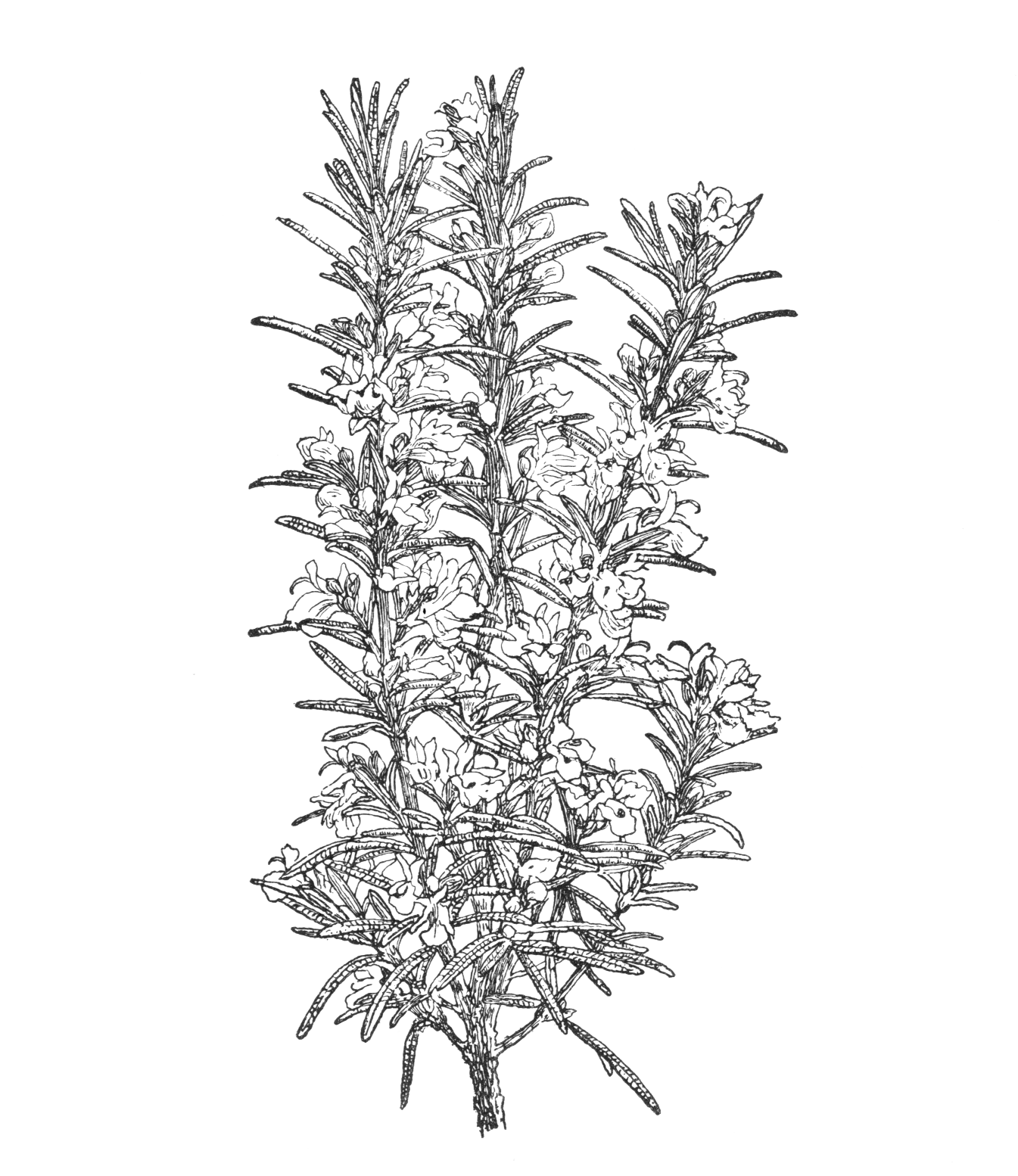Rosmarinus officinalis
Credits
Article from Bean's Trees and Shrubs Hardy in the British Isles
Recommended citation
'Rosmarinus officinalis' from the website Trees and Shrubs Online (treesandshrubsonline.
Genus
Common Names
- Rosemary
Infraspecifics
Other taxa in genus
An evergreen shrub of dense, leafy habit, forming a bush 6 or 7 ft high and as much wide; young stems slender, downy. Leaves opposite, linear, 3⁄4 to 2 in. long, 1⁄16 to 1⁄8 in. wide; not stalked, blunt at the apex; margins recurved; dark rather glossy green above, white-felted beneath, aromatically fragrant when crushed. Flowers produced during May in clusters of two or three in the leaf-axils of the previous year’s shoots. Corolla two-lipped, pale violet-blue and white; calyx darker and purplish, very downy.
Native of the Mediterranean region, the western Iberian peninsula and. Morocco; cultivated in Britain for four hundred years, probably much longer-It is the only cultivated species, but there are some distinct forms. Nearly related to the lavender, this shrub is also much associated with it in gardens. Its aromatic odour suggests nutmeg. A fragrant oil is extracted from the plant. The rosemary, which likes a sunny spot and not too heavy a soil, is scarcely so hardy as the lavender, although it is rarely injured. During the peculiarly trying winter of 1908–9, however, most of the old plants at Kew were killed, whilst two-year-old plants were not injured. It is readily increased by cuttings placed in a cold frame. Old specimens form short, rugged trunks, and are very picturesque.
Both in S. Europe and in Britain the rosemary fills a notable place in folklore. At one time it was believed to possess a stimulating influence on the memory, and was even known as ‘herb of memory’, hence the well-known line of Ophelia, ‘There’s rosemary, that’s for remembrance’. The same idea has also given it a significance in association with the dead. In the old chanson we find the lines:
A l’entour de sa tombe, romarin l’on planta,
Sur la plus haute branche, le rossignol chanta.
R. officinalis is very variable in habit, from erect to ground-hugging; in the length and relative width of its leaves and in their colouring, which varies from grass-green to deep sea-green; in the length of the calyx and the density of its indumentum, and in the size and colouring of its flowers. There is also a variation in the composition of its essential oil, and hence in the fragrance of the leaves, some garden clones of wild provenance having an aroma which, though pleasant, is not that of the common culinary rosemary. But this is itself a cultivar.
Five varieties of R. officinalis were recognised by Dr Turrill in his study of the genus (Kew Bull., 1920, pp. 105–8), based mainly on vegetative characters. But for the garden plants clonal names suffice. The following is a selection of the varieties in commerce:
From the Supplement (Vol. V)
cv. ‘Miss Jessopp’s Upright’. – The name should be so spelt, not ‘Miss Jessup’s Upright’ as given. See the note by Audrey le Lievre in The Garden (Journ. R.H.S.), Vol. 109, p. 474 (1984).

